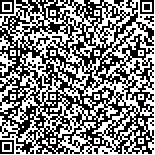| 引用本文: |
赵娜,杨正望,全春梅.多囊卵巢综合征临床分型与中医证型的相关性分析[J].湖南中医药大学学报,2017,37(9):966-968[点击复制] |
|
| |
|
|
| 本文已被:浏览 3037次 下载 1018次 |
| 多囊卵巢综合征临床分型与中医证型的相关性分析 |
| 赵娜,杨正望,全春梅 |
| (湘潭市妇幼保健院, 湖南 湘潭 411100;湖南中医药大学第一附属医院, 湖南 长沙 410007) |
| 摘要: |
| 目的 探讨多囊卵巢综合征(polycystic ovarian syndrome,PCOS)患者不同临床分型与中医证型的相关性。方法 将132例多囊卵巢综合征患者根据睾酮(T)水平及体质量指数(BMI),分为高雄组、非高雄组及肥型、瘦型、正常型;根据中医四诊分类,将PCOS患者辨证分型,主要分为肾虚肝郁证、肾虚血瘀证、肾虚痰阻证、肝郁血瘀证、脾虚痰湿证、肝经湿热证、痰瘀互结证七大证。观察不同的临床分型与中医证型的规律。结果 132例PCOS患者中,肾虚肝郁证45.5%,肾虚血瘀证11.3%,肾虚痰阻证1.5%,肝郁血瘀证16.7%,脾虚痰湿证0.8%,肝经湿热证9.1%,痰瘀互结证15.1%;肥型18.9%,瘦型18.9%,正常型62.2%。BMI从低到高的证型依次为肾虚肝郁证、肝郁血瘀证、肝经湿热证、肾虚血瘀证、肾虚痰阻证、脾虚痰湿证、痰瘀互结证。T水平从低到高依次为肥型、正常型、瘦型。不同中医证型、体型、雄激素水平无明显差异(P>0.05),组间无统计学意义。结论 肾虚肝郁证临床较为多见,PCOS病理因素主要与虚、郁、瘀、痰相关。肝郁者的BMI偏低,形态多瘦,而痰湿者的BMI较高,形体多肥。瘦型PCOS患者T水平较肥型高。不同中医证型分类与T水平无关。 |
| 关键词: 多囊卵巢综合征 肾虚肝郁证 肝郁血瘀证 脾虚痰湿证 痰瘀互结证 |
| DOI:10.3969/j.issn.1674-070X.2017.08.012 |
| 投稿时间:2015-09-29 |
| 基金项目:湖南省中医药管理局项目(201128)。 |
|
| Correlation Analysis of Clinical Classification and TCM Syndrome Type in Polycystic Ovary Syndrome |
| ZHAO Na,YANG Zhengwang,QUAN Chunmei |
| (Maternal and Child Health Care Hospital of Xiangtan City, Xiangtan, Hunan 411100, China;The First Affiliated Hospital of Hunan University of Chinese Medicine, Changsha, Hunan 410007, China) |
| Abstract: |
| Objective To investigate the correlation between different clinical classification and TCM syndrome types in polycystic ovary syndrome. Methods 132 cases of PCOS patients were divided into high androgen group, non-androgen group, fat type, thin type, normal type according to testosterone and body mass index (BMI). The PCOS syndrome was mainly divided into kidney deficiency and liver stagnation syndrome, kidney deficiency and blood stasis syndrome, kidney deficiency and phlegm stagnation syndrome, liver stagnation and blood stasis syndrome, spleen deficiency and phlegm dampness syndrome, dampness-heat of liver channel syndrome, obstruction of phlegm and stasis syndrome according to TCM four diagnosis. The rule between different clinical classification and TCM syndrome types was observed. Results TCM syndrome type distributions of 132 PCOS patients: kidney deficiency and liver stagnation syndrome 45.5%, kidney deficiency and blood stasis syndrome 11.3%, kidney deficiency and phlegm stagnation syndrome 1.5%, liver stagnation and blood stasis syndrome 16.7%, spleen deficiency and phlegm dampness syndrome 0.8%, dampness-heat of liver channel syndrome 9.1%, obstruction of phlegm and stasis syndrome 15.1%, fat type 18.9%, thin type 18.9%, normal type 62.2%. Syndromes ordered from low to high according to BMI: kidney deficiency and liver stagnation syndrome, liver stagnation and blood stasis syndrome, kidney deficiency and blood stasis syndrome, dampness-heat of liver channel syndrome, kidney deficiency and phlegm stagnation syndrome, obstruction of phlegm and stasis syndrome. Syndromes ordered from low to high according to T level: fat type, normal type, thin type. There was no significant different between different TCM syndrome types, body type, testosterone level. Conclusion The syndrome of kidney deficiency and liver was the most common type. PCOS pathology factors were mainly associated with deficiency, depression, blood stasis and phlegm. Patients with liver stagnation syndrome show lower BMI and thinner body type, while the patients with phlegm dampness syndrome higher BMI and more fat type. The thin type of PCOS patients show higher testosterone level. Different TCM syndromes have no relationship with the testosterone level. |
| Key words: polycystic ovary syndrome syndrome of kidney deficiency and liver stagnation syndrome of stagnation of liver Qi and blood stasis syndrome of phlegm-dampness due to spleen deficiency syndrome of intermingled phlegm and blood stasis |
|

二维码(扫一下试试看!) |
|
|
|
|




